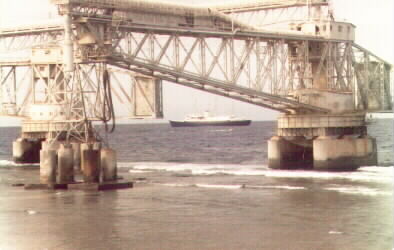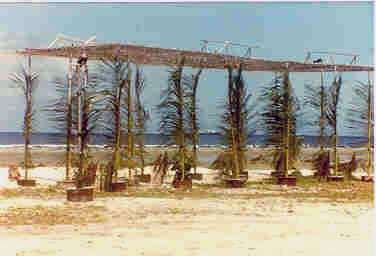

We decided to go to Nauru when we found difficult to obtain visa to come to Australia. We saw an advert on one of the Hong Kong papers, from a Nauruan mining company operating on Nauru, asking for Power Station operators.
I assumed that probably would be easier to get visa to Australia if you were close and working for an Australian company. My assumptions were correct and we managed to get the visa six months after we arrived, but the island lifestyle caught on us and we end up staying almost six years and loved every one of them.
Nauru (in Nauruan language Naoero), is an island and republic in the central Pacific Ocean, situated just south of the equator. It is a coral island, oval in shape, raising 500 m from the sea bed and with an area of 21 sq km (8.1 sq mi). The total population of about 8,000, being 4000 Nauruans and the rest expatriate workers for the phosphate mine and government agencies.
Nauru was a fantastic place for us to live. In the five years we lived on Nauru we were able to finally encounter peace and stability to our lives after we left Angola. Professionally, the jobs I undertook were not very demanding once I learnt sufficient English to make communication easier. With my "training" in Angola in dealing with people under duress, the politics of Nauru were very tamed and caused no sweat to handle. I could concentrate on diving and photography.
We lived a quiet and enjoyable life in Nauru; it was there that we started our lives in an English speaking environments and for the large majority of people on the island English was also a second language. It made learning so much easy because we did not have to feel embarrassed for not speaking it very well.
Being a small island and with so few people it provided a safe place to bring up our daughters. They started school there and Nauru primary education system provided them good foundations for the education they continue in Australia.
Diving was fabulous and we did it more than 500 times. I started underwater photography in Nauru and the beauty of the coral reef finally convinced Filomena to take the plunge despite the stories about sharks, deep diving and difficult entry and exit the reef.
The family enjoyed the quiet lifestyle and Erica and Rita roamed free on the Island and on the "free bus" the company provided. In this album we will try to provide a picture of the life on Nauru. I hope you will enjoy

No 1 Cantilever one of the two phosphate loading structures with the royal yacht Britannia in the background.

Frigate birds stand.